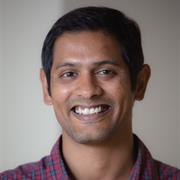 Welcome to the laboratory of Dr. Ashwanth Francis
Welcome to the laboratory of Dr. Ashwanth Francis
The scope of the Francis lab’s research program is to understand how viruses reach their replication centers within the nucleus of living cells. We use a combination of cellular, molecular, genomics and biophysical techniques including quantitative live-cell imaging and fluorescence guided cryo-Electron Tomography approaches to study the biophysical nature of virus-host interactions.
Our Current Projects
Virus-host interactions and transport mechanisms
In the Francis lab we study the capsid dependent HIV-1 biology, namely disassembly (uncoating) and nuclear transport steps using live-cell imaging techniques. By incorporating a combination of fluorescent proteins to mark the capsid (CA) and the viral replication complex (VRCs), simultaneously, we visualize single virus infection. These fluorescently labeled virus particles and imaging tools serve as an invaluable platform to illustrate the spatial-temporal regulation of single HIV-1 infection in living cells (Francis and Melikyan, Cell Host & Microbe 2018).
3D correlative Light and cryo-Electron Tomography (cryo-CLEM)
Whereas fluorescence live-cell imaging provides spatial-temporal information of virus-host interactions, we are also interested in understanding the structural basis for this process. Towards this goal we are developing 3D correlative light and cryo-EM (cryo-CLEM) imaging methods to facilitate the structural imaging of sub-viral complexes inside cells. The combined information obtained from fluorescence live-cell imaging and cryo-CLEM structural imaging allows one to appreciate the dynamics, mechanisms and structural features of the relevant virus-host interactions.

